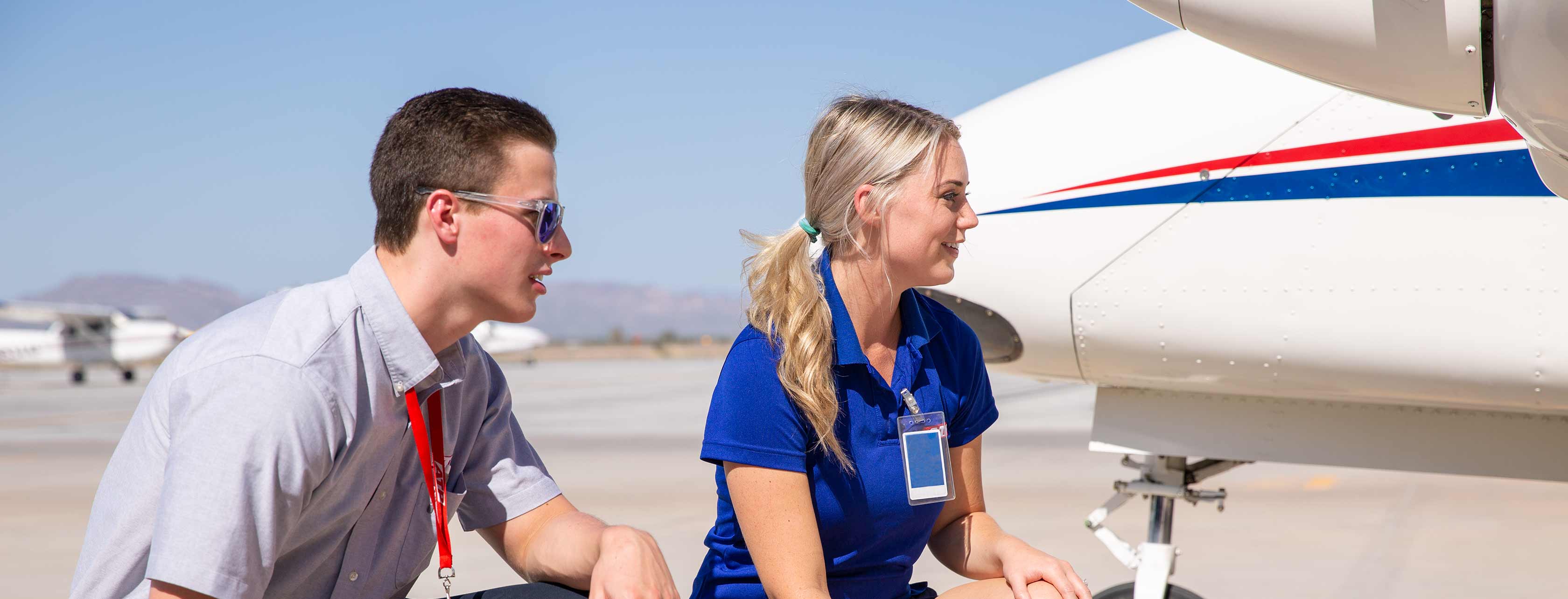Stage Check or Evaluation
Depending on your program you may have a series of stage checks. Stage checks are evaluations during training to establish your level of progress and what needs work leading up to the final oral and practical test for each rating. They are informal by design and not taken with the FAA, but you may not be able to move forward without demonstrating you have met each milestone in that portion of training. An example of where you might find a stage check is prior to being allowed to fly an airplane for the first time by yourself, or about mid-way through the instrument training to determine you are progressing as you should. You will often find stage checks during each rating you undertake, and they should be constructive for both you and your instructor to formulate a plan to success as you finish the rating.
FAA Private Pilot Test
The first mandatory evaluation is found in the private pilot license stage. While still informal, the FAA mandates that all student pilots are given a pre-solo knowledge test prior to their first solo. Usually given in written form, the pre-solo knowledge test will focus on aeronautical knowledge that should be known by the student pilot prior to flying the aircraft solo. Aircraft systems, flight characteristics, performance limitations, regulations, weather, traffic pattern operations, and airport diversions, among other topics, may be the focus of the pre-solo knowledge test. Instructors will review all incorrect answers with the student upon completion. While there is no guidance about passing or failing, the instructor will determine if they want to authorize the student for solo or if more training is necessary. Instructors should ensure sufficient training is provided to the student before administering the test.
FAA Airmen Knowledge Test
The private, instrument, commercial, flight instructor, instrument flight instructor, and airline transport pilot ratings all include a formal knowledge test that must be completed prior to conducting the practical exam for the given certificate. Presently, these tests are multiple choice and computer-based, and completed in a designated testing center. Some flight schools have their own testing center, while others may require candidates locate a testing center in their area. Often called "writtens", these tests will focus on aeronautical knowledge and skills necessary for their respective rating, and no notes are allowed. In some cases, a standalone flight computer or calculator may be used, but phones and tablets are not allowed in the testing room. A score of 70% or higher is needed to pass the test. Although not required, students that complete a home-study course focused on the specific written test generally produce better scores. Most home-study courses include practice tests that can be taken once the study material is completed.
Practical Test (Checkride)
The hard work for each rating culminates in a final practical test with an FAA examiner, commonly known as a checkride. The checkride is two parts, composed of an oral evaluation and a flight evaluation in the airplane. The oral portion is usually conducted in a private office or classroom where you and the examiner will discuss the expectations of the test, possible outcomes, a plan of action corresponding with the Airman Certification Standards (ACS) for the given rating, and of course the examiner will accept payment for their services. The examiner will question the applicant on areas of knowledge necessary for the rating (outlined in the ACS) and will incorporate scenario-based questioning when able. If the examiner determines the candidate’s knowledge was satisfactory on the oral portion, they will head to the aircraft to complete the practical portion of the exam.
In the practical flight portion of the exam, the examiner will evaluate the candidate through every step, from the preflight inspection to the post-flight inspection. During the flight, the candidate will demonstrate they can operate the aircraft safely and within the standards outlined in the ACS. The examiner will ask the candidate to demonstrate proficiency in all applicable areas for the rating. For example, during the private pilot practical exam, candidates will demonstrate a series of different takeoffs and landings, maneuvers, cross-country flight planning and navigation, dealing with emergencies, and diversions. During the instrument phase the candidate will demonstrate proficiency in navigating by use of instruments, holding patterns, a series of different instrument approaches, and cockpit management. The commercial phase consists of several takeoffs, landings, and maneuvers found in the private stage, but to tighter tolerances, as well as a few new maneuvers. The ACS should be referred to for specific guidance on necessary tasks for each rating.
Upon completion of a satisfactory practical exam, the examiner will issue a temporary certificate to the pilot allowing them to exercise the privileges of their new rating. The entire process can take from a couple hours to half the day and signifies your hard work and dedication when completed successfully. The practical test can be extremely stressful but with diligence and sufficient preparation the entire occasion can be enlightening and exciting.
Request More Information »
